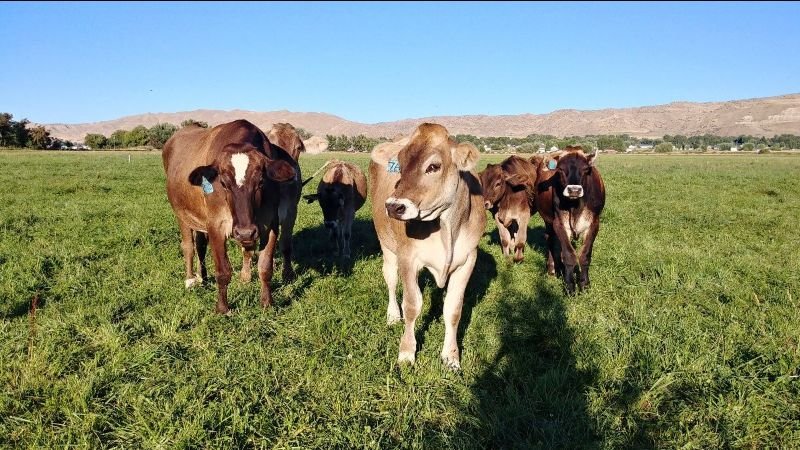These grass fed beef stuffed peppers are a step above a typical dinner. The stuffed peppers come together quickly, the ingredients required are easily sourced, and they have a certain wow factor to the taste.
The seasonings add a delicious savory depth without being “spicy”.
Enjoy!
INGREDIENTS
8 large bell peppers, tops and seeds removed
2 tablespoons fat (lard, butter, tallow)½ onion, chopped
2 lb Saint John’s organic grass fed ground beef
1 16 oz can diced tomatoes, drained well
4 oz tomato sauce
1 cup cooked rice
1 teaspoon salt
1 tablespoon Worcestershire sauce
1 tablespoon Italian seasoning
1 tsp garlic powder
1 tsp onion powder
1 ½ cup shredded mild cheese (cheddar, jack, etc.)
METHOD
Preheat oven to 375 degrees.
Prepare a large stock pot half full of water. Add a pinch of salt and set to boil. Once the water is boiling, add peppers (with tops and seeds removed) and cook for 5 minutes. When finished cooking, strain and set aside to cool.
While waiting for the water to boil, prepare the filling to stuff the peppers. Melt the fat on medium-high heat in a deep skillet. Once hot, add onion and a pinch of salt and cook until translucent, about 8 minutes.
Add ground beef and cook until completely cooked through.
Lower heat to medium-low, and add ingredients through onion powder. Add only 1 cup of shredded cheese, reserving the other ½ cup. Stir well and add extra salt to taste.
Slice peppers once lengthwise and shake out any accumulated water from boiling. Arrange peppers in a glass 9 x 13 pan and add ½ - 1 cup of filling to each pepper. You may have some leftover filling, depending on your pepper sizes.
Top peppers with remaining ½ cup of cheese and cover with aluminum foil.
Bake for 30 minutes and serve hot!
If you try this recipe, let us know by tagging us on Facebook or Instagram.











































